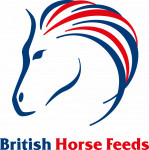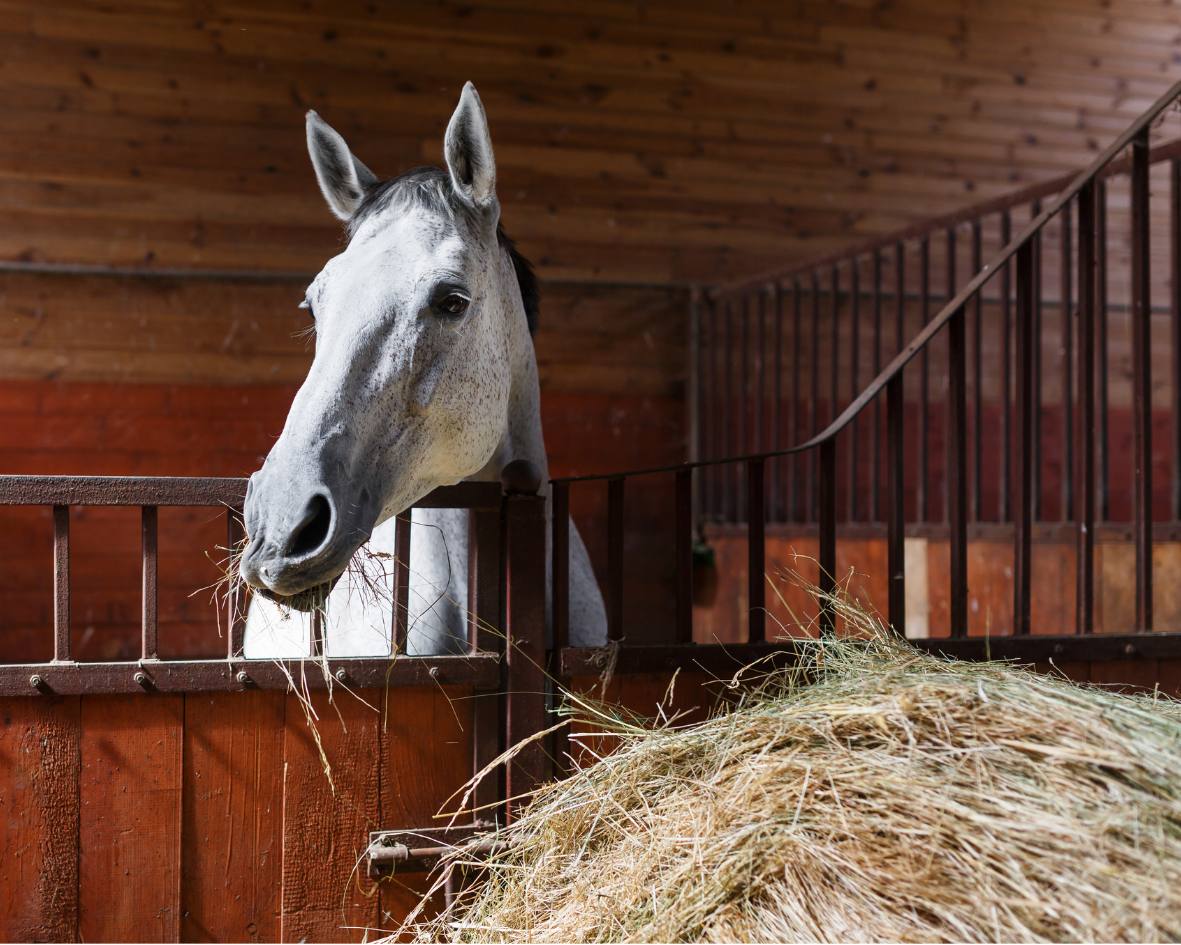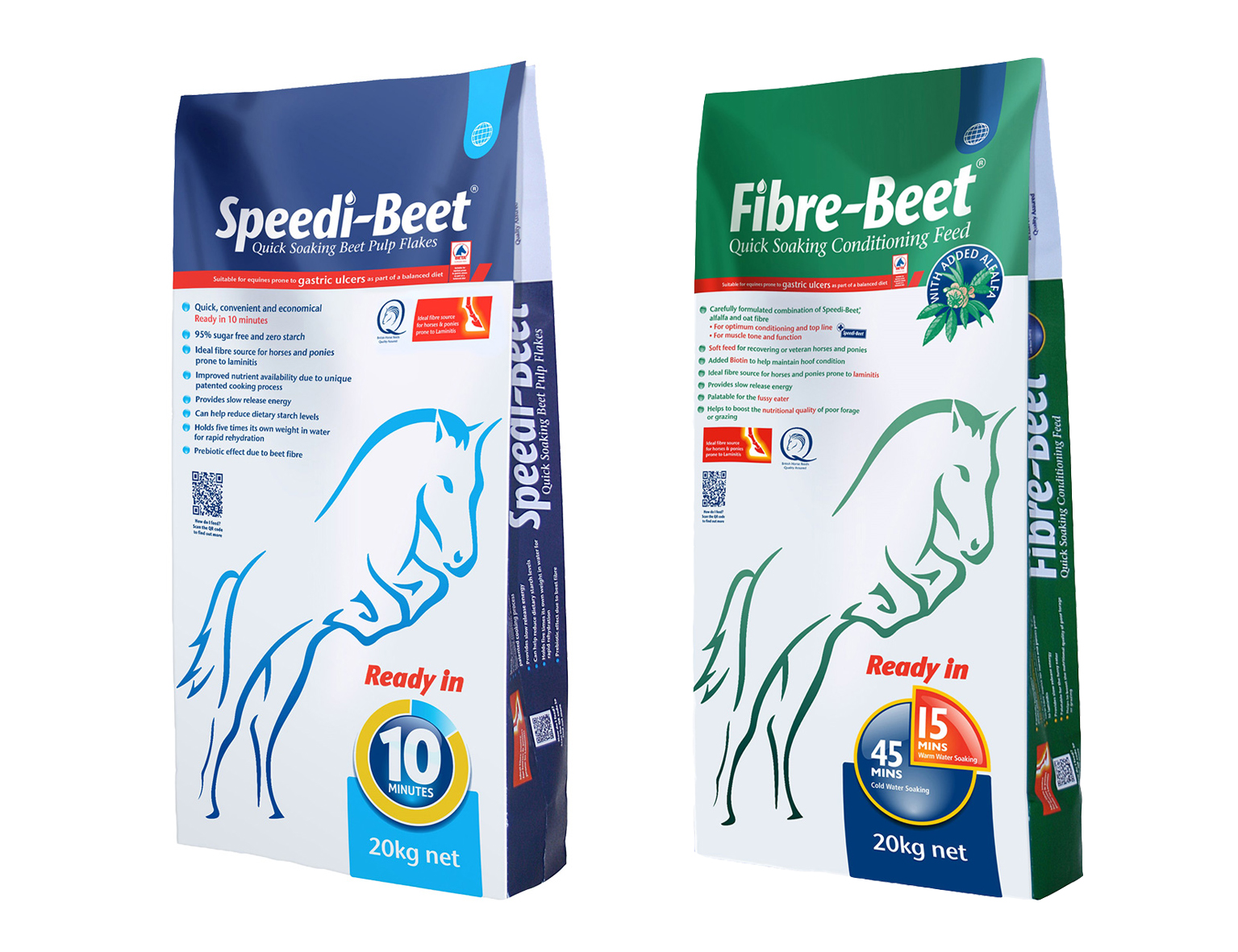Posted: 31st October 2022 | Back to news feed


By Dr Tom Shurlock, Consultant Nutritionist at British Horse Feeds
Forage is defined as plant material grazed by herbivores, such as horses, including preserved versions such as hays, haylage and silage.
In the UK, this mainly relates to grasses, or cereal fodder, but across the world it encompasses many different species and leys.
However, despite the wide range of forage types there are a number of common factors, and these relate to the fibre profile.
Forage Fibre
There are four main components of fibre in plants: lignin, cellulose, hemicellulose and soluble fibre.
Lignin is woody material that is inherent in the structural fibre; as lignin is impervious to most microbial fermentation, increasing levels will reduce the overall digestibility of the forage.
Beyond this there is a relatively consistent ratio between cellulose and hemicellulose in forages. This is due to the basic structure of plant cell walls – designed to give rigid, yet elastic properties.
In the majority of grass, cereal, legume and various other forages there is an approximately consistent ratio between cellulose and hemicellulose. These are the structural fibres, with pectins and other soluble fibres providing the “filling”, so it is perhaps unsurprising that there is a consistent relationship.
There are differences, the makeup of individual carbohydrate molecules may vary, and these may affect the profile of slow release energy, but in the main the structural integrity of plant cell walls and their rigidity is based on this relationship.
Broadly speaking it is relationship that carries through to both Speedi-Beet and Fibre-Beet, the main difference being inherent levels of the soluble fibre, pectin:
Although the British Horse Feeds products are generally slightly higher in hemicelluloses, and substantially higher in pectins, they are still a relatively good fit and so appropriate for replacement.
Another good reason for forage replacement with Speedi-Beet or Fibre-Beet is the presence of increased pectins. The soluble fibre is believed to act as a prebiotic, encouraging the growth of those microbes that can breakdown hemicellulose, improving the overall digestibility of fibre in the gut; in essence lower levels of these feeds can replace higher levels of forage.
However, it is not solely a matter of replacement. Using Speed-Beet or Fibre-Beet can be far more versatile.
Replacing Forage
The term forage replacer is, almost by definition, a misleading. As forage describes such a variable product then it would be difficult to replace it with another. Forage replacers are, in fact, forage alternatives and as such have a number of roles. Maybe we should be using the term ‘forage management’.
We are increasingly becoming aware of the need to supply fibre as the main source of energy as it has benefits, both physical and physiological, that are not automatically provided by other sources, and the best source of fibre is still forage. It also is the cheapest and so makes sense to optimise its use. Mediating this fibre uptake is becoming the role of the forage replacers or alternatives. And this is done in one of three ways:
Forage Dilution
Basically for horses who are at the maintenance end of the scale. They may be resting, prone to fat or who have underlying issues that require a low energy diet. Here the replacers are usually built around chaff or straw. We are supplying high levels of cellulose that is broken down only slowly in the hindgut and helps offset the faster fermentation of grass or hay that has greater levels of the more fermentable hemicellulose and soluble fibres. Additionally they are traditionally low in protein and sugars, both of which can reach surprisingly high levels in grass.
Forage Extension
Possibly this is true forage replacement, although which type and state of forage that is being replaced is difficult to say. Here we are supplying a fibre product that is similar in profile to a reasonable quality hay or grass and is used to even out the variations that are present in the forage, whether it is changes in fibre content and profile, protein or sugars.
Here the basic forage is suitably matched to the horse and its lifestyle, all we are doing is ensuring consistency of product and, in extreme cases where our forage runs out, providing a short term alternative to that forage.
Forage Enhancement
Forage alone is not sufficient to provide all the nutrients required for the more active horse. People may prefer not to rely too much on traditional hard feeds for a variety of reasons and so choose forage enhancement.
These products are based upon super fibres, which really mean sources high in soluble fibres, pectins and hemicelluloses, and low in cellulose and lignified material. Generally speaking these are usually beet pulp, soya hulls and oat fibres, though alfalfa can be another source. By providing highly fermentable fibre sources the daily energy intake of an active horse can be significantly increased without resorting to starchy feeds.
Although there are three distinct areas where forage is “replaced” they all have a common factor. They provide extra fibre without extra starch or sugars and without high levels of protein. Bearing in mind that grass, depending on the time of year, can have on a dry basis up to 25% protein and 30% sugars, diluting these levels with good quality fibre can offset potential nutritional problems of oversupply.

The Equestrian Index newsfeed is compiled from articles submitted by advertising members and expresses the opinions of those members. Watsons Directories Ltd shall not be held liable for any inaccuracies or mis-statements therein.